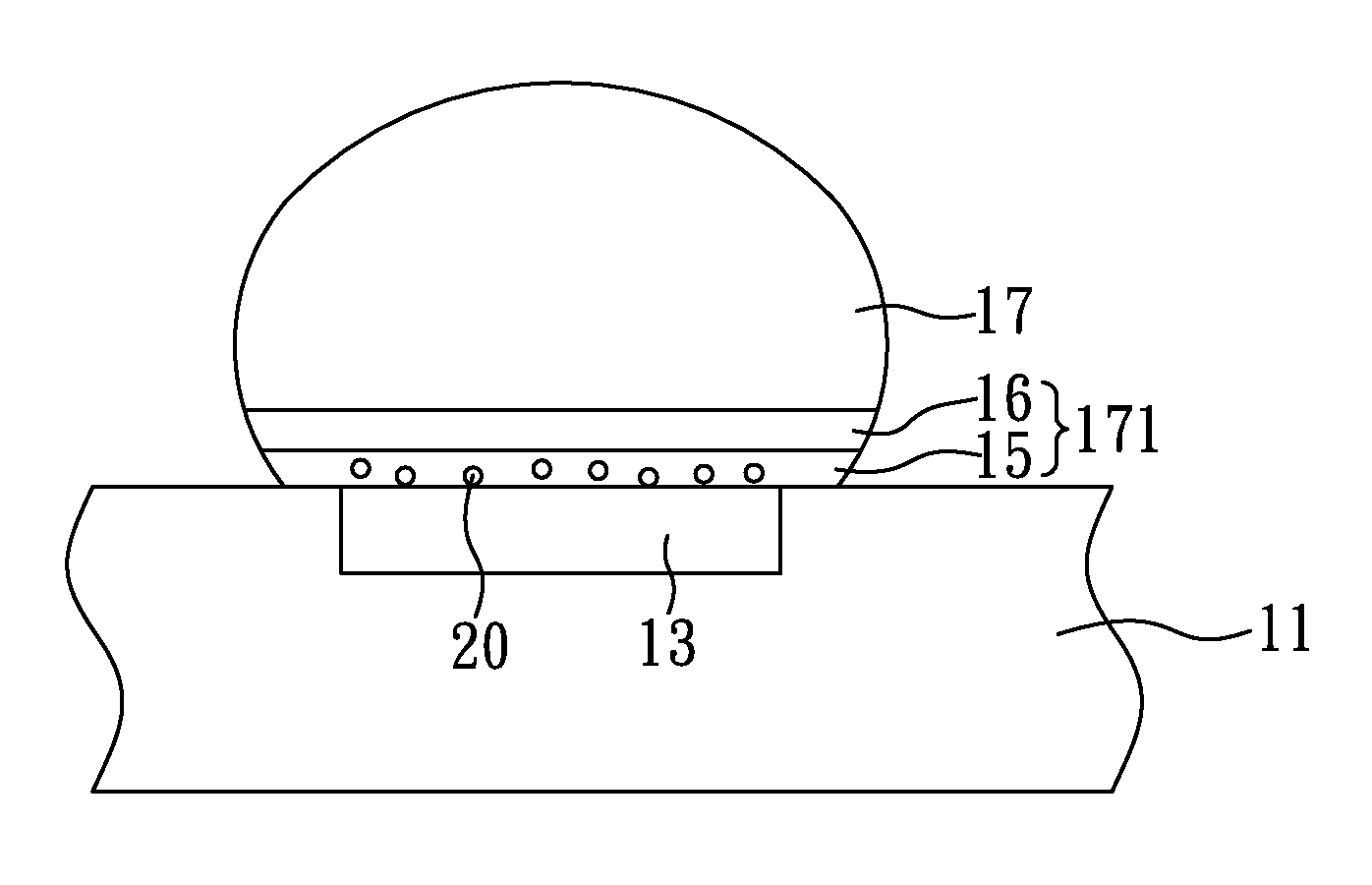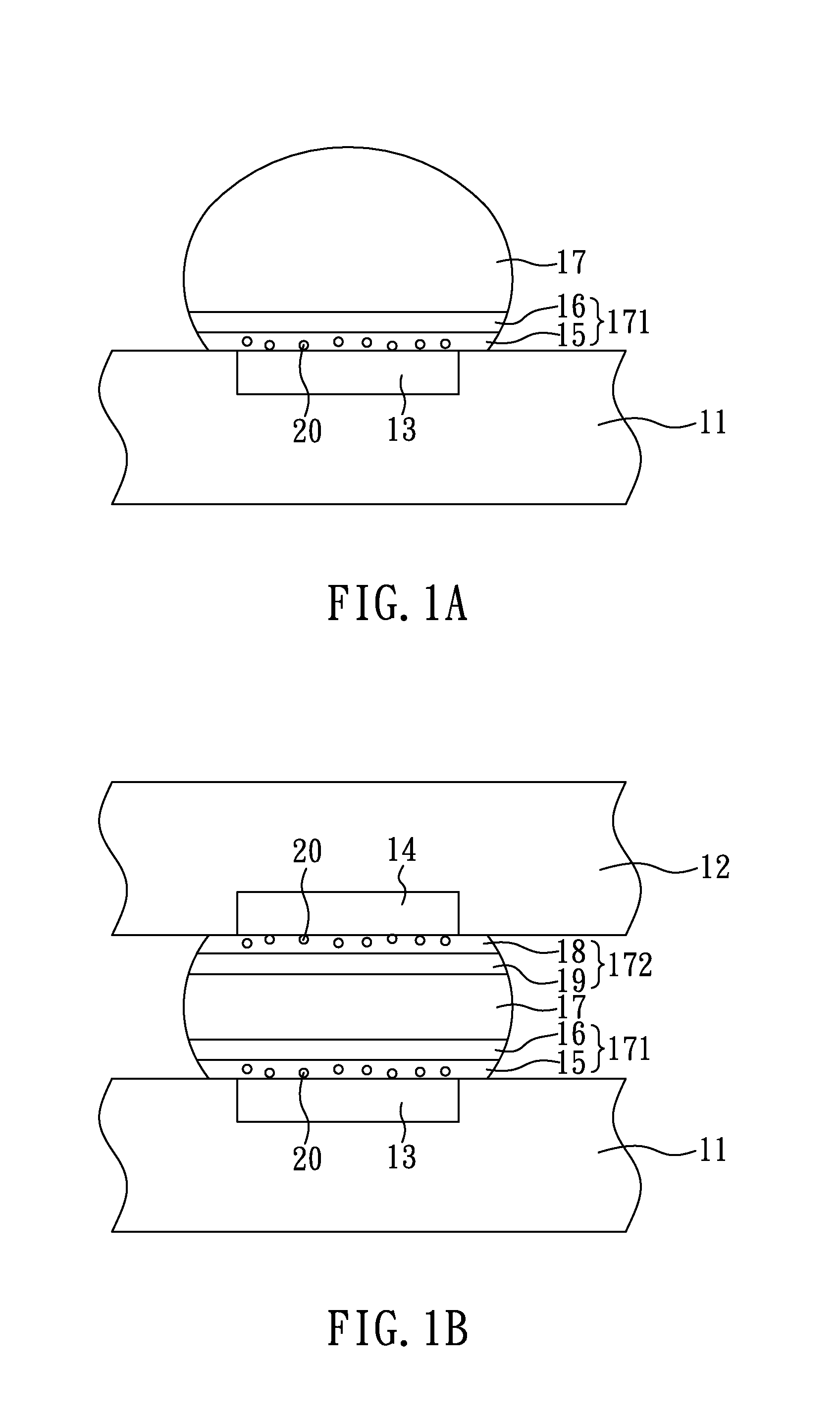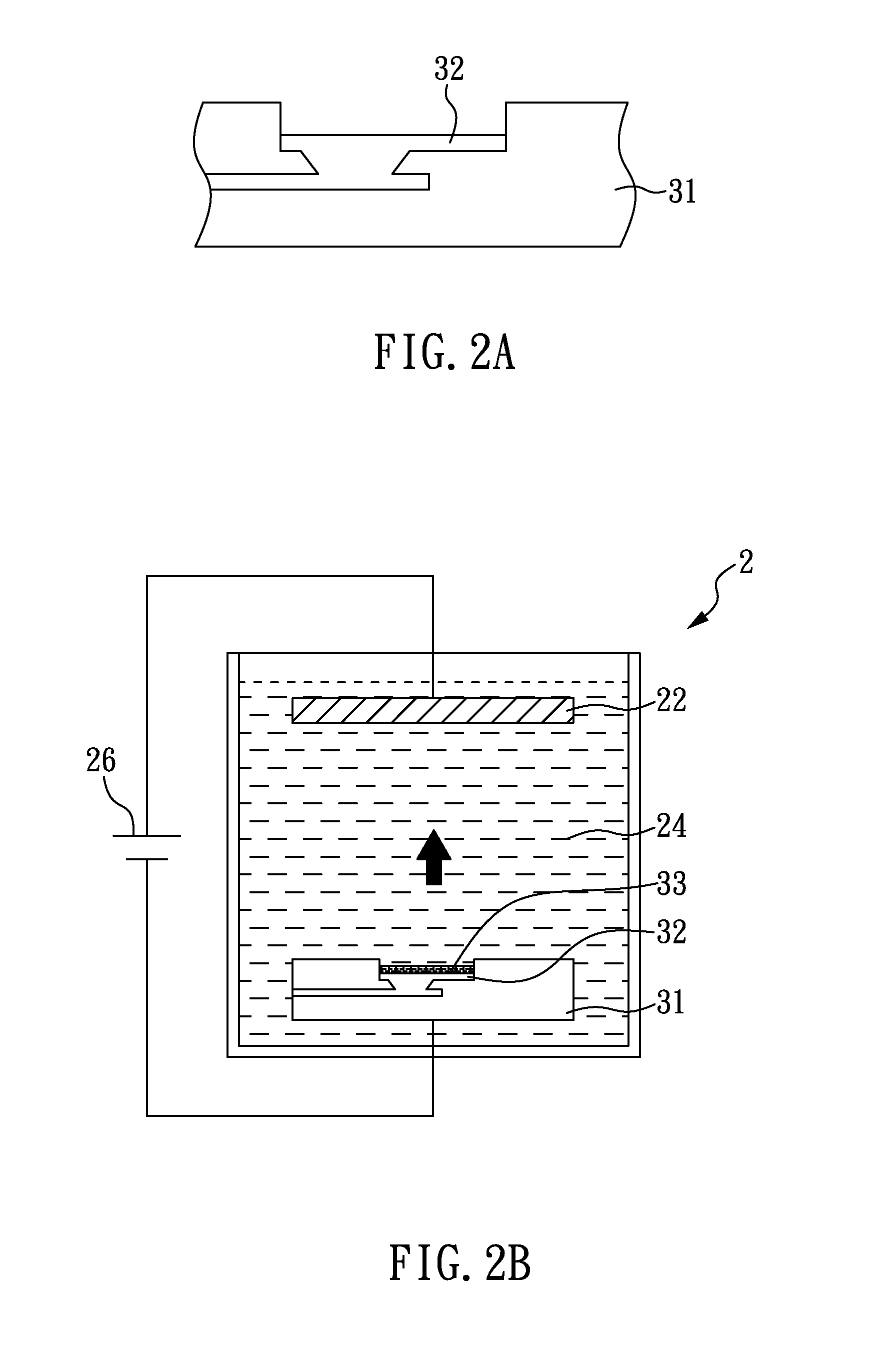Electrical connecting element having nano-twinned copper, method of fabricating the same, and electrical connecting structure comprising the same
- Summary
- Abstract
- Description
- Claims
- Application Information
AI Technical Summary
Benefits of technology
Problems solved by technology
Method used
Image
Examples
embodiment 1
[0058]FIGS. 2A to 2D show the flowcharts for the preparation of the electrical connecting element of the current embodiment. As shown in FIG. 2A, the preparation begins with providing a substrate 31, wherein, the substrate 31 is a printed circuit board having a wiring layer 32 (which can also be used as an electrical pad). Next, which is shown in FIG, 2B, is to place the substrate 31 into an electroplating device 2 to be used as a cathode. The electroplating device 2 comprises an anode 22, which is immersed in the electroplating solution 24 and is connected to a direct current power supply source 26 (for which Keithley 2400 is used in this case). The material used in the anode 22 is metal copper, phosphor bronze or inert anode (e.g. platinum coated titanium). The electroplating solution 24 comprises copper sulfate (copper ion concentration being 20-60 g / L), chloride ion (whose concentration being 10-100 ppm), and methanesulfonic acid (whose concentration being 80-120 g / L), and other...
embodiment 2
[0066]In the current embodiment, as shown in FIG. 3A, a nano-twinned copper layer 43 (used as an electrical pad) is grown on the surface of two semiconductor chips 41 by way of the same electroplating methods described for Embodiment 1.
[0067]Then, a solder is used (not shown in the Figures, the solder of the current embodiment is pure tin, thickness of which is 10 μm) to bind the two semiconductor chips 41 by reflowing at 260° C. for 0.05. hours. It is then followed by another reflow at 260° C. for 1 hour, so as to make the solder transform into an intermetallic compound layer having Cu3Sn layers 44 and a Cu6Sn5 layer 45 with direction-less atomic ordering. Herein, the Cu3Sn layer 44 has a thickness of 1 μm, and the thickness of the Cu6Sn5 layer 45 is 9 μm. After reflow is complete, all solders (not shown in Figures) are transformed into intermetallic compound layer 47. As shown in FIG. 3A, the structure of the intermetallic compound layer 47 is a three-layered structure comprising ...
embodiment 3
[0070]In reference to FIG. 4A, the electrical connecting structure 4 having nano-twined copper for the current embodiment is for the most part equivalent to the electrical connecting structure of Embodiment 2, except for the difference where the thickness of the solder 46 of the current Embodiment is larger, and only a portion of the solder 46 is transformed into the intermetallic compound layer 47 after a reflow process.
[0071]FIG. 4B shows a cross-sectional FIB image of the electrical connecting element 49 of the current embodiment. In this embodiment, the electrical connecting element having nano-twinned copper comprises (reference is also drawn to FIG. 4A): two nano-twinned copper layers 43; an intermetallic compound layer 47, which is disposed between the two nano-twinned copper layers 43 and comprises Cu3Sn layers 44 and Cu6Sn5 layers 45; a solder 46, which is disposed between two Cu6Sn5 layers 45. Therefore, the electrical connecting element 49 of the current embodiment has a ...
PUM
| Property | Measurement | Unit |
|---|---|---|
| Temperature | aaaaa | aaaaa |
| Temperature | aaaaa | aaaaa |
| Angle | aaaaa | aaaaa |
Abstract
Description
Claims
Application Information
 Login to View More
Login to View More - R&D
- Intellectual Property
- Life Sciences
- Materials
- Tech Scout
- Unparalleled Data Quality
- Higher Quality Content
- 60% Fewer Hallucinations
Browse by: Latest US Patents, China's latest patents, Technical Efficacy Thesaurus, Application Domain, Technology Topic, Popular Technical Reports.
© 2025 PatSnap. All rights reserved.Legal|Privacy policy|Modern Slavery Act Transparency Statement|Sitemap|About US| Contact US: help@patsnap.com



